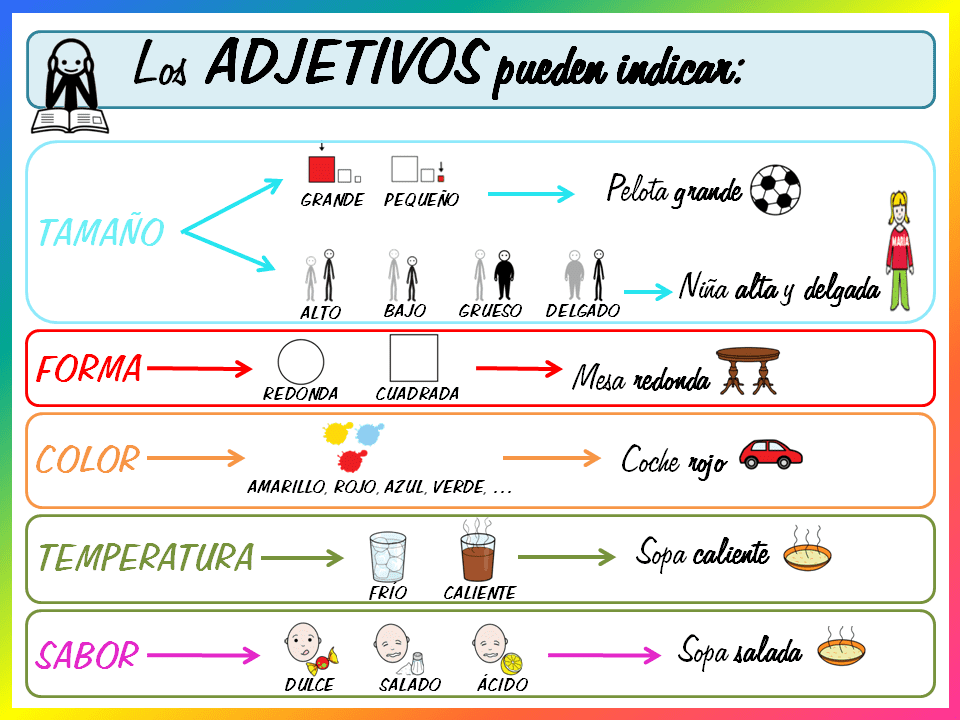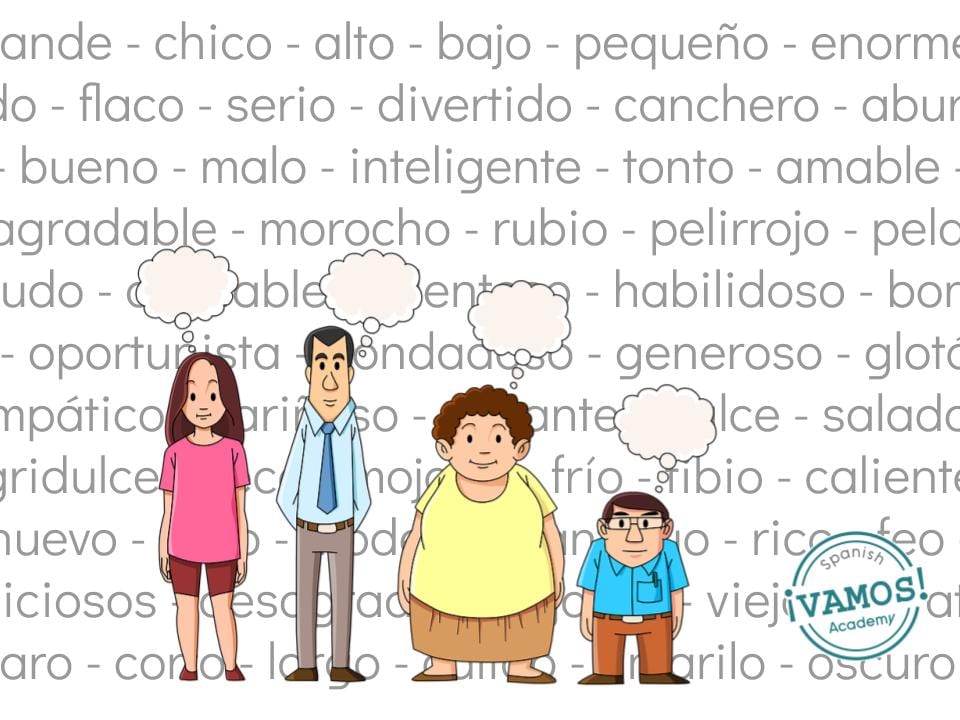An adjective is a word that modifies a noun. In other words, adjectives describe an attribute of a noun, such as green, sour, or scary. Adjectives often distinguish a noun from a group of similar objects.
For example:
- The red car
- The blue car
- The yellow car
Most adjectives in Spanish change form, depending on whether the noun that it is describing is masculine or feminine. Look at the difference below:
- “el niño alto – the tall boy”
- “la niña alta – the tall girl“
Adjectives also change form based on whether the word modifies a singular or plural noun. Look at the difference between the singular and plurals below:
- el niño alto
- los niños altos
- la niña alta
- las niñas altas
In Spanish, many common adjectives end in -o. Adjectives that end in -o almost always have four forms. The words below all mean “short”:
- bajo (masculine singular)
- baja (femenine singular)
- bajos (masculine plural)
- bajas (femenine plural)
The correct form of the adjective depends upon the noun it modifies. Is the noun masculine or feminine? Singular or plural?
| Spanish | English |
| el vaso rojo | red cup |
| la mochila roja | red backpack |
| los vasos rojos | red cups |
| las mochilas rojas | red backpacks |
Notice how the endings of the nouns and these adjectives are similar.
- vaso rojo
- mochila roja
- vasos rojos
- mochilas rojas
Just as we talked about in our lesson about plural nouns, there are certain rules that apply to forming plural adjectives.
In order to form a plural adjective that ends in -e, simply add an -s.
- la mesa grande
- las mesas grandes
Adjectives that end in -e do not, however, change form for masculine or feminine but do for singular and plural.
- la perra inteligente
- el perro inteligente
- las gatas inteligentes
- los gatos inteligentes
Similarly, most adjectives that end in a consonant do change form for singular or plural, but do not change for masculine or feminine. To form the plural, add -es.
- la chica popular
- el chico popular
- las chicas populares
- los chicos populares
Let’s review.
- Adjectives that end in -o have four forms: alto, alta, altos, altas
- Adjectives that end in -e have two forms: inteligente, inteligentes
- Most adjectives that end in a consonant have two forms: popular, populares (form plural by adding -es)


WITH VAMOS ACADEMY YOU CAN:
LEARN SPANISH IN MADRIDLEARN SPANISH IN SANTIAGO DE CHILE




